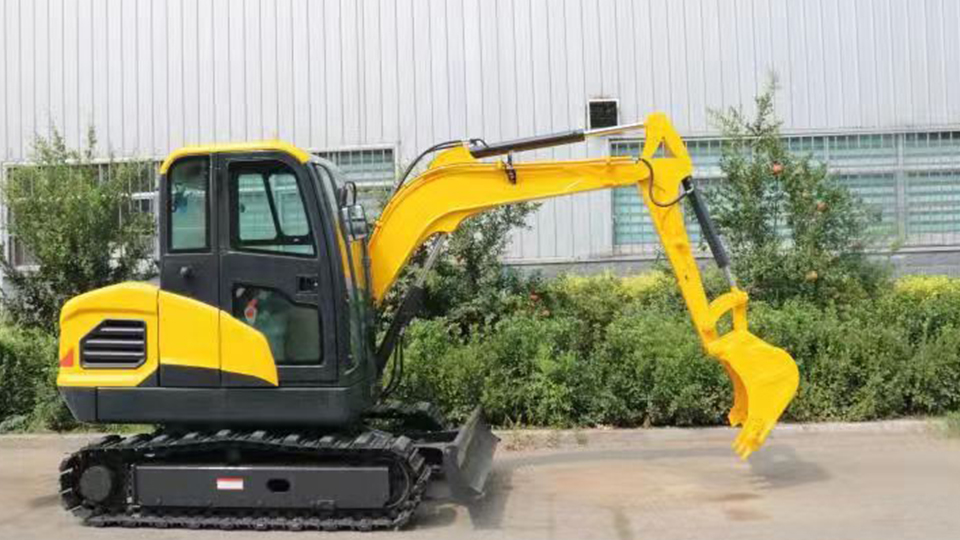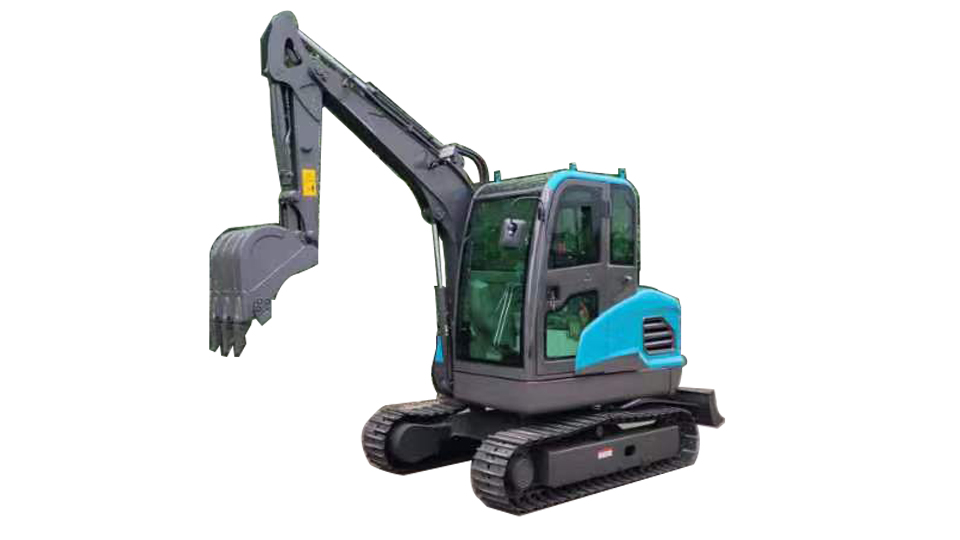Beyond the Bucket: The Indispensable Importance of Excavator Attachments
The excavator, a powerful and versatile piece of heavy machinery, has become an indispensable asset across a multitude of industries, from construction and demolition to mining and landscaping. While the base machine itself provides the fundamental hydraulic power and maneuverability, it is the excavator attachments that truly unlock its full potential, transforming it from a simple digging tool into a multi-functional workhorse capable of tackling a diverse range of tasks with remarkable efficiency and precision. This technical article delves deep into the crucial importance of excavator attachments, exploring their impact on productivity, versatility, safety, cost-effectiveness, and the overall evolution of earthmoving and related industries.
Extending Functionality: Transforming a Single Machine into Many
At its core, the primary importance of excavator attachments lies in their ability to significantly extend the functionality of the base excavator unit. Without attachments, an excavator's capabilities would be largely limited to digging and basic material relocation using its standard bucket. Attachments act as specialized tools, engineered to perform specific tasks that would otherwise require entirely separate machines and operators. This inherent versatility offers numerous advantages:
Increased Task Range: A single excavator, equipped with a variety of attachments, can perform tasks ranging from trenching and excavation to demolition, material processing (crushing, screening), forestry work (tree felling, stump removal), and even specialized tasks like pile driving or concrete breaking. This eliminates the need for multiple single-purpose machines on a job site.
Enhanced Efficiency: By utilizing the right attachment for the job, tasks can be completed more quickly and efficiently than with a general-purpose bucket or manual labor. Specialized attachments are designed to optimize performance for specific applications, leading to faster cycle times and increased output.
Improved Precision: Certain attachments, such as grading buckets, hydraulic thumbs, and specialized grapples, offer a level of precision and control that is difficult or impossible to achieve with a standard bucket. This is crucial for tasks requiring accuracy, such as final grading, material sorting, and delicate demolition work.
Boosting Productivity and Optimizing Workflow:
The strategic use of excavator attachments directly translates to significant gains in productivity and streamlined workflows on project sites:
Reduced Downtime: The ability to quickly switch between different attachments allows a single excavator to perform sequential tasks without waiting for other specialized machinery to arrive or become available. This minimizes downtime and keeps projects moving forward.
Optimized Material Handling: Attachments like grapples, buckets with thumbs, and material handlers are specifically designed for efficient loading, unloading, sorting, and moving various types of materials, from construction debris and scrap metal to logs and rocks. This optimizes material flow and reduces manual handling.

Simultaneous Operations: In some cases, excavators can be configured to operate multiple attachments simultaneously (e.g., a grapple and a shear), further enhancing efficiency and reducing the number of passes required to complete a task.
Access to Confined Spaces: Compact excavators paired with specialized attachments can access and perform work in confined or difficult-to-reach areas where larger machinery cannot operate.
Enhancing Safety and Reducing Risk:
The use of appropriate excavator attachments plays a crucial role in enhancing safety on job sites and reducing the risks associated with manual labor or using inappropriate equipment:
Reduced Manual Labor: Attachments automate tasks that would otherwise require manual labor, such as breaking concrete with jackhammers or manually sorting debris. This reduces the risk of musculoskeletal injuries and other hazards associated with strenuous manual work.
Improved Control and Stability: Specialized attachments are designed to handle specific materials and tasks in a controlled manner, improving the stability of the excavator and reducing the risk of accidents caused by uncontrolled movement of materials.
Safer Demolition Practices: Demolition attachments like shears, pulverizers, and breakers allow for the controlled dismantling of structures from a safe distance, minimizing the risk to personnel compared to manual demolition methods.
Specialized Handling: Attachments designed for handling specific materials (e.g., vacuum lifters for concrete panels) ensure a secure grip and reduce the risk of dropped loads.
Driving Cost-Effectiveness and Return on Investment:
While the initial investment in excavator attachments represents an additional cost, their long-term impact on cost-effectiveness and return on investment is often significant:
Reduced Equipment Fleet: The versatility offered by attachments can reduce the need for a large fleet of specialized single-purpose machines, lowering capital expenditure, maintenance costs, and transportation expenses.
Lower Operating Costs: Increased efficiency and faster task completion translate to lower labor costs and reduced fuel consumption per unit of work.
Minimized Downtime Costs: As mentioned earlier, the ability to quickly switch between attachments minimizes downtime, ensuring that projects stay on schedule and avoid costly delays.
Increased Project Profitability: By enhancing efficiency, reducing costs, and expanding the range of tasks a single excavator can perform, attachments contribute to increased project profitability.
Higher Resale Value: A well-maintained excavator with a diverse set of useful attachments can often command a higher resale value compared to a basic unit.
The Diverse World of Excavator Attachments: A Glimpse into Functionality
The range of available excavator attachments is vast and continues to grow, with manufacturers constantly innovating to address specific industry needs. Some of the most common and important categories include:
Buckets: Beyond the standard digging bucket, numerous specialized buckets exist, including trenching buckets (narrow for digging trenches), grading buckets (wide and shallow for leveling), skeleton buckets (for sifting material), and rock buckets (reinforced for handling abrasive materials).
Hydraulic Breakers (Hammers): Powerful tools used for breaking rock, concrete, and asphalt in demolition, construction, and quarrying applications.
Shears: Designed for cutting metal (scrap, rebar, structural steel) in demolition and recycling operations.
Pulverizers: Used in secondary demolition to crush concrete and separate rebar for recycling.
Grapples: Versatile attachments for grabbing, lifting, sorting, and moving various materials like logs, scrap metal, waste, and rocks. Different types include sorting grapples, demolition grapples, and log grapples.
Thumbs: Hydraulic or mechanical thumbs that work in conjunction with a bucket to grip and manipulate objects, effectively turning the bucket into a clamp.
Rippers: Heavy-duty attachments with a single, robust tooth used for breaking up hard ground, rock, and frozen soil.
Compactors: Plate compactors or vibratory rollers attached to the excavator arm for soil and asphalt compaction in trenching and road construction.
Augers: Used for drilling holes in the ground for foundations, fence posts, and other applications.
Milling Heads (Planers): Rotary cutting attachments used for removing asphalt and concrete surfaces in road repair and demolition.
Pile Drivers: Attachments designed for driving piles into the ground for foundations and other support structures.
Forestry Mulchers: Used for clearing vegetation, grinding trees and brush into mulch in forestry and land clearing applications.
Quick Couplers: Essential devices that allow for the rapid and safe exchange of different attachments, maximizing the excavator's versatility and minimizing downtime.
The Evolution of Excavator Attachments: Innovation Driving Progress
The development and refinement of excavator attachments have been a continuous process of innovation, driven by the demands of various industries for more efficient, safer, and more versatile earthmoving solutions. Key trends in attachment development include:
Increased Power and Efficiency: Manufacturers are constantly striving to design attachments that deliver more power with less hydraulic flow, improving fuel efficiency and cycle times.
Enhanced Durability and Reliability: Attachments are being built with stronger materials and more robust designs to withstand the harsh conditions of construction and demolition sites, reducing maintenance requirements and downtime.

Improved Control and Precision: Advanced hydraulic systems and electronic controls are enabling more precise and controlled operation of attachments, crucial for tasks like grading and material sorting.
Integration with Smart Technologies: Some attachments are being integrated with sensors, GPS systems, and telematics to provide real-time data on performance, location, and maintenance needs.
Specialization for Niche Applications: The development of highly specialized attachments caters to the unique demands of specific industries, such as forestry, mining, and recycling.
Focus on Environmental Sustainability: Attachments designed for efficient material processing and recycling contribute to more sustainable construction and demolition practices.
Conclusion: Embracing Versatility for a More Efficient Future
In conclusion, excavator attachments are far more than mere accessories; they are integral components that unlock the true potential of the excavator, transforming it into a versatile and indispensable workhorse across a multitude of industries. Their importance lies in their ability to extend functionality, boost productivity, enhance safety, drive cost-effectiveness, and adapt to the ever-evolving demands of modern construction, demolition, and related fields. By strategically utilizing the diverse range of available attachments, businesses can optimize their operations, reduce their equipment footprint, and achieve greater efficiency and profitability. As technology continues to advance, the innovation in excavator attachment design will undoubtedly continue, further solidifying their crucial role in shaping the future of earthmoving and material handling. The excavator, equipped with the right attachments, is not just a machine; it's a dynamic and adaptable solution for a wide spectrum of challenging tasks.
Post time:Sep-25-2020
